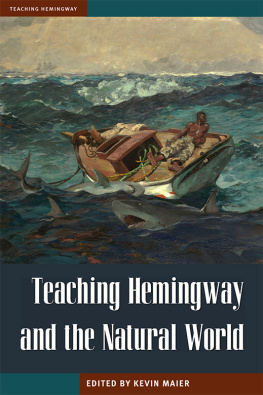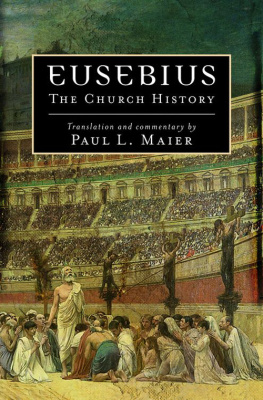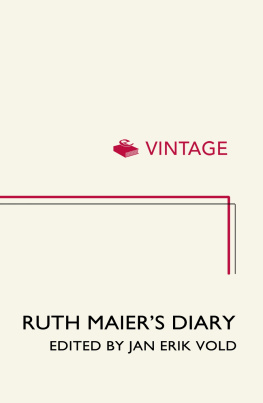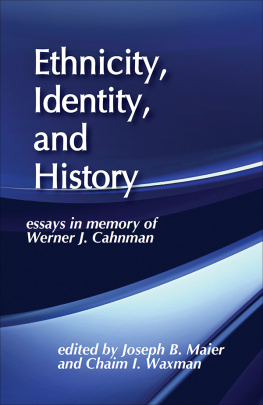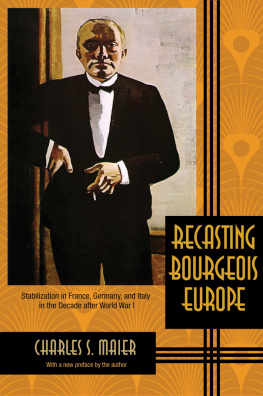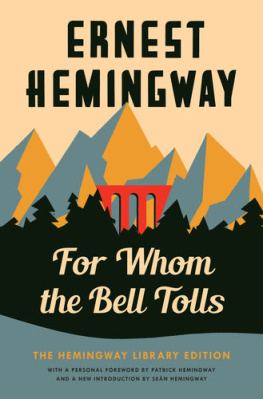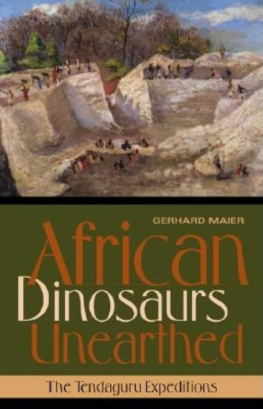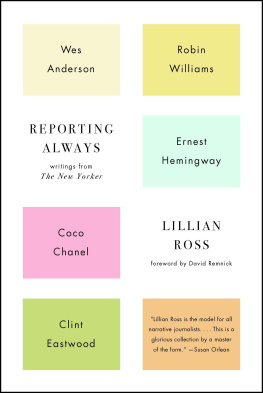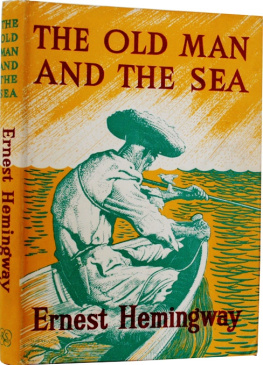Maier Kevin - Teaching Hemingway and the Natural World
Here you can read online Maier Kevin - Teaching Hemingway and the Natural World full text of the book (entire story) in english for free. Download pdf and epub, get meaning, cover and reviews about this ebook. publisher: The Kent State University Press, genre: Detective and thriller. Description of the work, (preface) as well as reviews are available. Best literature library LitArk.com created for fans of good reading and offers a wide selection of genres:
Romance novel
Science fiction
Adventure
Detective
Science
History
Home and family
Prose
Art
Politics
Computer
Non-fiction
Religion
Business
Children
Humor
Choose a favorite category and find really read worthwhile books. Enjoy immersion in the world of imagination, feel the emotions of the characters or learn something new for yourself, make an fascinating discovery.
- Book:Teaching Hemingway and the Natural World
- Author:
- Publisher:The Kent State University Press
- Genre:
- Rating:3 / 5
- Favourites:Add to favourites
- Your mark:
- 60
- 1
- 2
- 3
- 4
- 5
Teaching Hemingway and the Natural World: summary, description and annotation
We offer to read an annotation, description, summary or preface (depends on what the author of the book "Teaching Hemingway and the Natural World" wrote himself). If you haven't found the necessary information about the book — write in the comments, we will try to find it.
Teaching Hemingway and the Natural World — read online for free the complete book (whole text) full work
Below is the text of the book, divided by pages. System saving the place of the last page read, allows you to conveniently read the book "Teaching Hemingway and the Natural World" online for free, without having to search again every time where you left off. Put a bookmark, and you can go to the page where you finished reading at any time.
Font size:
Interval:
Bookmark:

TEACHING HEMINGWAY
Mark P. Ott, Editor
Susan F. Beegel, Founding Editor
Teaching Hemingways The Sun Also Rises
EDITED BY PETER L. HAYS
Teaching Hemingways A Farewell to Arms
EDITED BY LISA TYLER
Teaching Hemingway and Modernism
EDITED BY JOSEPH FRUSCIONE
Teaching Hemingway and War
EDITED BY ALEX VERNON
Teaching Hemingway and Gender
EDITED BY VERNA KALE
Teaching Hemingway and the Natural World
EDITED BY KEVIN MAIER
and the Natural World
Edited by Kevin Maier
 The Kent State University Press Kent, Ohio
The Kent State University Press Kent, Ohio
2018 by The Kent State University Press, Kent, Ohio 44242
All rights reserved
Library of Congress Catalog Card Number 2017016132
ISBN 978-1-60635-318-9
Manufactured in the United States of America
Library of Congress Cataloging-in-Publication Data
Names: Maier, Kevin, editor.
Title: Teaching Hemingway and the natural world / edited by Kevin Maier.
Description: Kent, Ohio : The Kent State University Press, c2018. | Series: Teaching Hemingway | Includes bibliographical references and index.
Identifiers: LCCN 2017016132 (print) | LCCN 2017031205 (ebook) | ISBN 9781631012846 (ePub) | ISBN 9781631012853 (ePDF) | ISBN 9781606353189 (pbk. : alk. paper)
Subjects: LCSH: Hemingway, Ernest, 1899-1961--Study and teaching. | Nature in literature.
Classification: LCC PS3515.E37 (ebook) | LCC PS3515.E37 Z6983 2018 (print) | DDC 813/.52--dc23
LC record available at https://lccn.loc.gov/2017016132
22 21 20 19 18 5 4 3 2 1
Contents
How should the work of Ernest Hemingway be taught in the twenty-first century? Although the culture wars of the 1980s and 1990s have faded, Hemingways place in the curriculum continues to inspire discussion among writers and scholars about the lasting value of his work. To readers of this volume, his life and writing remain vital, meaningful, and still culturally resonant for todays students.
Books in the Teaching Hemingway series build on the excellent work of founding series editor Susan F. Beegel, who guided into publication the first two volumes of this series, Teaching Hemingways A Farewell to Arms, edited by Lisa Tyler (2008), and Teaching Hemingways The Sun Also Rises, edited by Peter L. Hays (2008). In an effort to continue to be useful to instructors and professorsfrom high schools, community colleges, and universitiesthe newest volumes in this series are organized thematically, rather than around a single text. This shift attempts to open up Hemingways work to more interdisciplinary strategies of instruction through divergent theories, fresh juxtapositions, ethical inquiries, and often employing emergent technology to explore media beyond the text.
Kevin Maiers Teaching Hemingway and the Natural World speaks to issues that continue to be of intense interest to students and scholars today: How did Hemingway engage the natural world? Did he see animalsmarlin, trout, big game, bullsas creatures to be conquered? Or, as a fisherman, hunter, and aficionado of the bullfight, was he trying to connect with an inner primal state, a spiritual brother? The expertise and insight Maier brings to his highly regarded, wide-ranging scholarship on such topics as environmental rhetoric, hunting, fishing, and tourism is manifest throughout this volume. These diverse essays exploring Hemingways fiction through the lens of the natural world will revise our understanding not only of Hemingway but of hunting, bullfighting, skiing, fishing, tourism, landscape, the literary marketplace, popular culture, and mens studies. Indeed, this volume demonstrates that not only is Hemingways work being taught in more thoughtful, creative, and innovative ways in todays classrooms and lecture halls than every before, but scholars are now extending the classroom and taking the Hemingway text to trout streams, ski slopes, and fiestas around the world.
Ernest Hemingway is a writer we often associate with particular places and animals: Michigans Upper Peninsula, Spains countryside, East Africas game reserves, Cubas blue water, and Idahos sagebrush all come to mind. We can also easily picture the iconic images of Hemingway with fly rod bent by hefty trout, with bulls charging matadors in the background, or of the famous author proudly posing with trophy lions, marlin, and a whole menagerie of western American game animals. As Robert E. Fleming once put itupdating Gertrude Steins famous quip that Hemingway looked like a modern and smelled of museumsHemingway was also a hunter, fisherman, and naturalist who smelled of libraries (1). Hemingway indeed read widely in natural history and science, as well as the literature of field sports. This lifelong interest in the natural world and its inhabitants manifests itself in Hemingways writing in myriad ways. To be sure, from the trout Nick Adams carefully releases to Santiagos marlin, from Robert Jordans heart beating against the pine needle floor of the forest to Colonel Cantwells beloved Italian duck marshes, and from African savannahs to the Gulf Stream, animals and environments are central to Hemingways work and life.
Since its origins, Hemingway scholarship has been marked by a robust treatment of these animals and environments. Malcolm Cowleys introduction to The Portable Hemingway focused on the fishing of Big Two-Hearted River, for example. Similarly, Phillip Youngs famous code-hero hypothesis arguably hinges on an understanding of hunting cultures rules of engagement for the natural world. In both these instances, and in much of the early scholarship, however, Hemingways representations of the natural world are mined for how they explain male psychology more than for how they suggest a particular relationship to the natural world or its inhabitants. While these representations often served as background for broader arguments related to more human-centered matters in early scholarship, more contemporary critics have opted to treat animals and environments directly. Flemings 1999 collection Hemingway and the Natural World offers an excellent foundation, but with the rapid emergence of environmental literary studies in the last two decades much work remains.
This collection aims not only to advance scholarship on Hemingways relationship to the natural world but also to facilitate bringing this scholarship to the classroom. Indeed, the goal of the Teaching Hemingway series is to present collections of essays on various approaches to teaching emergent themes in Hemingways major works to a variety of students in secondary schools and at the undergraduate and graduate levels. The goal of this particular volume of the series is to explore how teaching Hemingway might help shed light on broader questions about the human relationship to the nonhuman world. Organized geographically, each section that follows features two or three essays about Hemingways favorite places.
Despite our association of Hemingway with particular places and with the natural world more generally, his work is not often featured as part of the broader conversations about environmental literature. As the first two essays in the collection eloquently suggest, one potential reason for this gap might be explained by the way Hemingway represents environments. Indeed, in the first texts to be firmly established as canonical environmental literatureAldo Leopolds
Font size:
Interval:
Bookmark:
Similar books «Teaching Hemingway and the Natural World»
Look at similar books to Teaching Hemingway and the Natural World. We have selected literature similar in name and meaning in the hope of providing readers with more options to find new, interesting, not yet read works.
Discussion, reviews of the book Teaching Hemingway and the Natural World and just readers' own opinions. Leave your comments, write what you think about the work, its meaning or the main characters. Specify what exactly you liked and what you didn't like, and why you think so.

